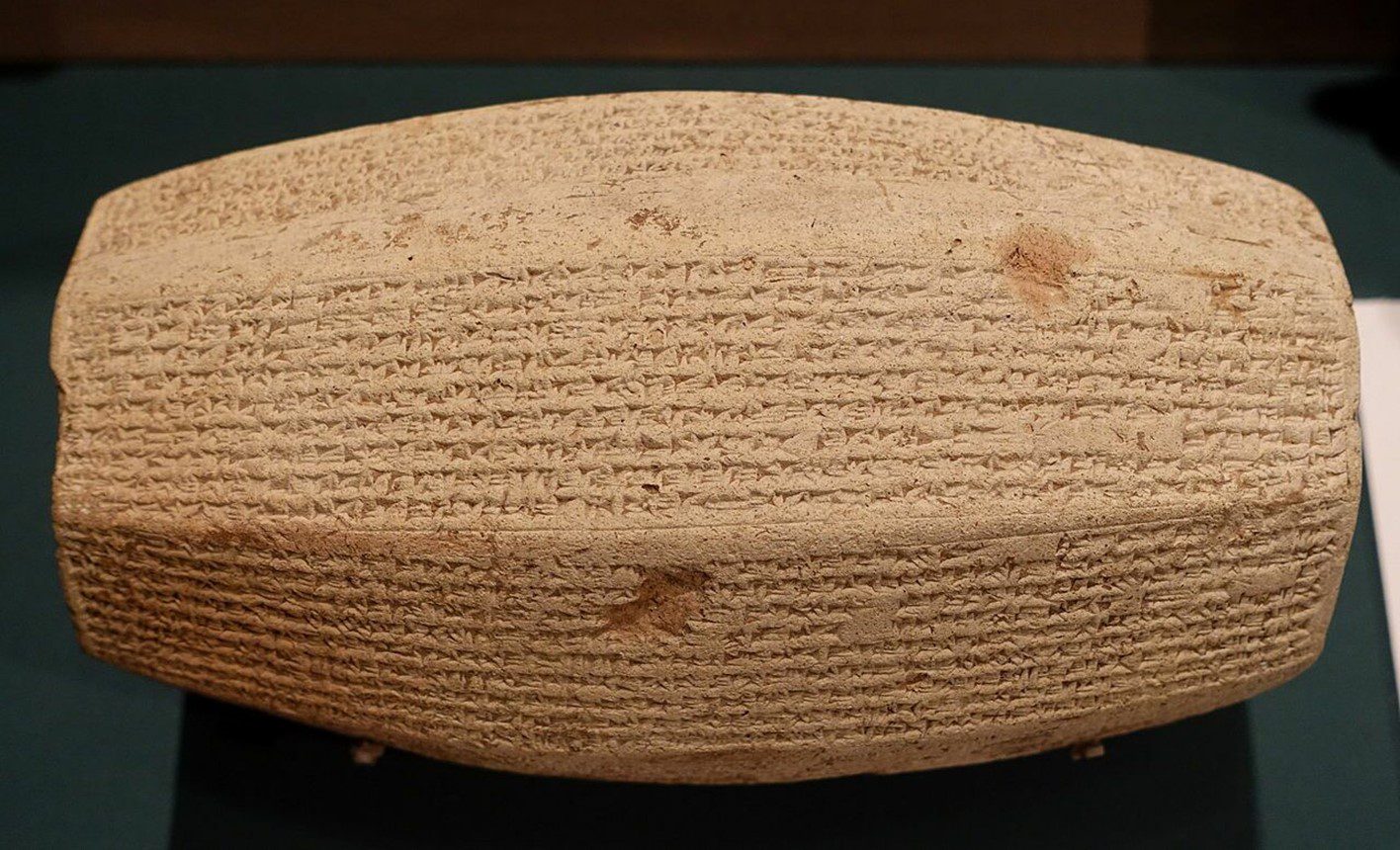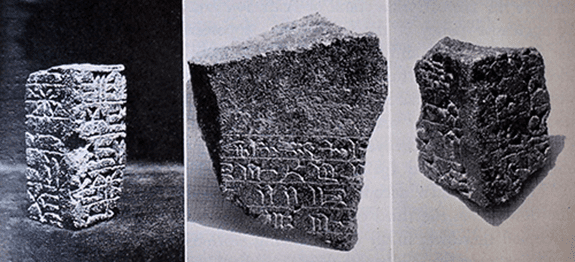First archaeological confirmation of scripture with reference to Sargon II
Interestingly, Sargon was only known through scripture as he is mentioned by name in Isaiah 20:1.
In the year that the supreme commander, sent by Sargon king of Assyria, came to Ashdod and attacked and captured it.
Bible critics used this to discount the Bible as being a record of actual history.
Ashdod was one of the five Philistine cities, and it was located near the Mediterranean Sea about 30 km northeast of Gaza. The city had rebelled in 713 BC under King Azuri and the Assyrians took revenge.
In 1963 excavations at the site unearthed the remains of 3,000 people who died in this conquest as well as three fragments of a basalt victory stela which was erected at Ashdod.[1] It read; Sargon, king of Assyria, who conquered Samaria and the entire region of Israel, he who made captives of Ashdod. This monument was probably erected at the behest of Sargon himself.
The images of the fragments were taken by Ferrell Jenkins when they were on display at the Israel Museum. Permission to use these images has been kindly granted.
Significance
The significance of this discovery is that it confirmed that Sargon was a king of Assyria and that he did send his military commander who led the attack which saw Ashdod fall. All of which confirmed the accuracy of Isaiah’s report, including the correct title of Sargon’s military commander.
Second archaeological confirmation of scripture with reference to Sargon II
Background
Hoshea, king of Israel also known as the Northern Kingdom, became a vassal to Assyria under the rule of Tiglath-Pileser III who is mentioned in 2 Kings chapters 15 and 16 as being king of Assyria. He was succeeded on the Assyrian throne by Shalmaneser V, who ruled from 727-722 BC. Shalmaneser learnt that Hoshea was planning an alliance with So (Osorkon IV) the Pharaoh of Egypt in attempt to throw off the Assyrian yoke (2 Kings 17:3-4). Consequently, he laid siege to Samaria. It took three years before the city finally succumbed to his forces and this was in the winter of 722-721 BC. However, it is Sargon II who came to power, possibly through an insurrection in 721 BC, who claimed the success of Samaria’s defeat. This is recorded in his annals.[2]
Scripture
2 Kings chapters 17:5-6 states:
The king of Assyria invaded the entire land, marched against Samaria, and laid siege to it for three years. In the nineth year of Hoshea, the king of Assyria captured Samaria and deported the Israelites to Assyria. He settled them in Halah, and Gozan on the harbor river and in the towns of the Medes.
2 Kings 17:24
The king of Assyria brought people from Babylon, Kuthah, Avva, Hamath and Sepharvaim and settled them in the towns of Samaria to replace the Israelites. They took over Samaria and lived in its towns.
This partial replacement of the Samaritans with Gentiles is the reason why the Jews of Jesus’ day hated the Samaritans and thought of them as half-castes, hence Jesus’ parable of the Good Samaritan.
The Annuals of Sargon II
 In the spring of 1843 Paul-Emile Botta (1802-1870) and Eugene Flandin (1809-1876) excavated Sargon’s capital, Korsabad for the Louvre Museum in Paris and among the inscriptions they unearthed, were the Annals of king Sargon II. The discovery of the tablet, pictured, was first published in 1849 with the first translation completed by Hugo Winckler in 1889.[3] It reads in part;
In the spring of 1843 Paul-Emile Botta (1802-1870) and Eugene Flandin (1809-1876) excavated Sargon’s capital, Korsabad for the Louvre Museum in Paris and among the inscriptions they unearthed, were the Annals of king Sargon II. The discovery of the tablet, pictured, was first published in 1849 with the first translation completed by Hugo Winckler in 1889.[3] It reads in part;
At the beginning of my royal rule, I…the town of the Samarians I besieged, conquered (2 Lines destroyed) [for the god…] who let me achieve this my triumph… I led away as prisoners [27,290 inhabitants of it (and) equipped from among them (soldiers to man)] 50 chariots for my royal corps…. The town I rebuilt better than it was before and settled therein people from countries which I had conquered. I placed an officer of mine as governor over them and imposed upon them tribute as is customary for Assyrian citizens. (Nimrud Prism IV 25-41)
Significance
The Annuls of Sargon II confirms the biblical account of the fall of Israel, including the deportation of the Israelites and the re-population of Samaria with foreign (Gentile) people.
Conclusion
In both cases the account of these events under the rule of the Assyrian king, Sargon as recorded in the Bible, have been shown to be true even in the minor details.
[1] Archaeology Study Bible, ESV, Crossway,2017, page 987.
[2] The NIV Study Bible, Zondervan Bible Publishers, 1985, Footnote, page 555.
[3] David E Graves, The Archaeology of the Old Testament, Electronic Christian Media, 2019, page 177.



1 Comment. Leave new
The BC/AD time line is significant owing to the existence of Jesus Christ I’m sure you have mentioned it before. In the light of this fact it’s hard to believe modern people can deny God Christ and the Bible.